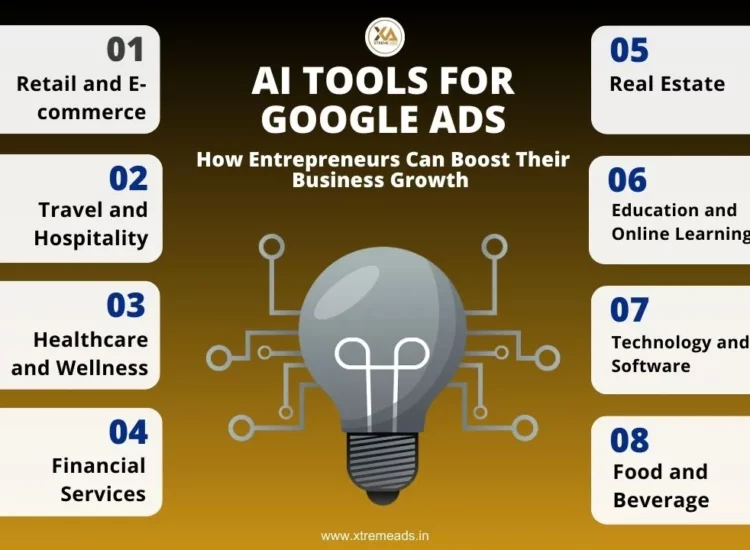In the ever-evolving landscape of digital marketing, businesses are constantly seeking innovative strategies to reach their target audience more effectively. One such approach that has gained significant traction is the vertical marketing system (VMS). This collaborative model, which involves the integration of manufacturers, wholesalers, and retailers, offers a unique opportunity for businesses to streamline their operations, enhance brand control, and ultimately drive better results.
Toc
- 1. Exploring the Types of Vertical Marketing Systems
- 2. Unlocking the Benefits of Vertical Marketing Systems
- 3. Navigating the Challenges of Vertical Marketing Systems
- 4. Related articles 01:
- 5. Implementing a Successful Vertical Marketing System
- 6. Case Studies: Vertical Marketing Systems in Action
- 7. The Future of Vertical Marketing Systems
- 8. Related articles 02:
- 9. Frequently Asked Questions
- 10. Conclusion
At its core, a vertical marketing system is a strategic alliance where different entities within the distribution channel work together as a unified entity. By aligning their respective strengths, resources, and expertise, these stakeholders can create a seamless customer experience, from product development to the point of sale.
Exploring the Types of Vertical Marketing Systems

When it comes to vertical marketing systems, there are three distinct models that businesses can adopt, each with its own characteristics and advantages:
Corporate Vertical Marketing System
A corporate vertical marketing system (VMS) is characterized by a single entity that owns and controls multiple levels of the distribution chain, encompassing everything from production to retail. This model provides a streamlined and cohesive approach, allowing the company to maintain consistency in quality, branding, and customer experience. It is often seen in industries like consumer electronics, where companies such as Apple have full command over their manufacturing processes, branding strategies, and sales channels. By owning each step of the supply chain, these companies can quickly adapt to market changes and innovate effectively, ensuring that their products meet evolving customer expectations.
Contractual Vertical Marketing System
In a contractual vertical marketing system, independent businesses operating at various stages of the distribution channel collaborate under formal agreements. These contractual relationships clearly define the roles, responsibilities, and terms of collaboration among the different parties involved. This system is commonly found in the franchising business model, where consistency and adherence to set standards are crucial. Companies like McDonald’s and KFC have successfully implemented this approach by partnering with franchisees around the globe. Through these agreements, brands can expand rapidly while ensuring that product quality and service standards remain uniform across locations.
Administered Vertical Marketing System
An administered vertical marketing system is one where a dominant member of the distribution channel, such as a large retailer or manufacturer, exerts significant influence over the other members. While there may not be formal contracts or shared ownership, the leading entity dictates the activities and operations of the entire system, ensuring alignment with its business objectives and strategies. Walmart serves as a prime example of a company that has mastered the administered VMS model. By leveraging its immense purchasing power and market presence, Walmart can negotiate favorable terms with suppliers, streamline logistics, and pass on cost savings to consumers, thereby maintaining its competitive edge in the retail industry.
Unlocking the Benefits of Vertical Marketing Systems

Implementing a well-structured vertical marketing system can provide businesses with numerous advantages, including:
Increased Efficiency
Vertical marketing systems streamline processes, eliminate redundancies, and improve communication, leading to significant operational efficiencies. For instance, a VMS can streamline the ordering process by allowing retailers to directly access manufacturers’ inventory systems, eliminating the need for intermediaries and reducing lead times. This direct communication can also reduce errors and miscommunications, further enhancing efficiency. For example, Walmart’s close collaboration with its suppliers, particularly in its private label program, enables it to achieve significant cost savings and faster product launches.
Enhanced Brand Control
VMS allows businesses to exercise greater control over their brand, ensuring a consistent message and experience across all touchpoints. For example, Apple’s corporate VMS allows it to tightly control the entire customer experience, from product design and manufacturing to retail and customer support. This centralized control ensures that the Apple brand remains consistent across all channels, leading to a strong brand image and loyal customer base. This has resulted in a high level of customer trust and brand loyalty, evident in Apple’s consistent market dominance.
Improved Responsiveness
With the close coordination of different distribution channel members, VMS enables businesses to quickly adapt to changing market conditions and customer preferences. This agility allows them to stay ahead of the competition, ensuring that they can meet customer demands effectively and efficiently.

While the benefits of VMS are substantial, there are also some potential challenges that businesses must address:
1. https://cungcapthietbiyte.com/archive/1975/
2. https://cungcapthietbiyte.com/archive/1977/
3. https://cungcapthietbiyte.com/archive/1974/
Conflict of Interest
When multiple entities with distinct goals and objectives are involved in a Vertical Marketing System (VMS), conflicts of interest can often arise. For instance, manufacturers may prioritize high production volumes to maximize economies of scale, while retailers might focus on stocking a diverse range of products to attract more customers. Balancing the needs and priorities of manufacturers, wholesalers, and retailers requires effective communication and compromise. Each entity must be willing to engage in dialogue to understand the perspectives and motivations of the others, ultimately working towards mutually beneficial solutions.
Loss of Control
Depending on the VMS model employed, companies may need to relinquish some control over certain aspects of their marketing and distribution operations. This potential loss of control can be a significant concern for businesses accustomed to maintaining tight control over their brand and processes. While VMS can enhance brand control through unified strategies, it can also lead to a lack of flexibility and responsiveness to local market conditions. This can be a disadvantage for businesses operating in diverse markets with varying consumer preferences and needs, as they might not be able to adapt quickly to changing conditions or customer demands.
Technology Integration
Seamlessly integrating technology solutions across the distribution channel is crucial for facilitating data sharing, process automation, and real-time decision-making within a VMS. Effective technology integration can lead to improved efficiency, better inventory management, and enhanced customer service. However, establishing and managing a VMS can be complex and require significant investment in technology and communication infrastructure. This challenge can be an especially daunting barrier for smaller businesses or those with limited financial or technological resources. Ensuring the right technology stack is in place, with scalable solutions that can grow alongside the business, is a critical consideration for any company looking to implement a successful VMS.
Implementing a Successful Vertical Marketing System

Transitioning to a vertical marketing system requires careful planning and execution. Here are some key steps to consider:
Define Clear Goals and Objectives
Before implementing a Vertical Marketing System (VMS), it’s essential for companies to define clear goals and objectives that align with their overall business strategy. Establishing measurable targets can help guide the development and implementation process, ensuring that each channel member understands their role and responsibilities within the system. These goals may include targets for sales growth, market penetration, or cost reduction, and should be communicated effectively across all levels of the organization. A comprehensive understanding of these objectives will facilitate alignment among the channel members and provide a benchmark against which progress can be measured. Additionally, regular assessments and adjustments to goals can maintain momentum and focus, helping the organization adapt to evolving market dynamics and customer expectations.
Foster Strong Partnerships
Creating a successful Vertical Marketing System (VMS) requires cultivating strong partnerships among all involved entities, including manufacturers, wholesalers, and retailers. The foundation of a good partnership is trust, which can be built through open communication and the sharing of resources. Businesses should invest in relationship-building activities and establish formal agreements that outline shared objectives and mutual benefits. Regular meetings and updates help ensure that all channel members are aligned, committed to the system’s success, and able to address any issues quickly. By fostering a collaborative environment, businesses can facilitate innovation, improve problem-solving, and create a more resilient supply chain capable of adapting to changes within the market.
Leverage Data and Analytics
To realize the full potential of a VMS, companies must leverage data and analytics to drive decision-making and optimize performance. By collecting and analyzing data from various touchpoints, businesses can gain valuable insights into customer behavior, market trends, and operational efficiencies. Advanced analytics tools can help detect patterns, predict demand, and identify areas for improvement. By utilizing data-driven strategies, businesses can make informed decisions, enhance customer satisfaction, and achieve their strategic goals more efficiently. Additionally, investing in robust data management systems is crucial to protect sensitive information and ensure compliance with relevant regulations.
Monitor and Adjust
The implementation of a Vertical Marketing System is a dynamic process that requires continuous monitoring and adjustment. Regular performance evaluations enable businesses to assess the effectiveness of their VMS in achieving strategic objectives, identify areas of improvement, and address any emerging challenges. Companies should develop key performance indicators (KPIs) to measure the system’s success in areas such as sales growth, customer satisfaction, and operational efficiency. Periodic reviews of these KPIs can inform adjustments to strategies and processes, allowing the VMS to remain agile and responsive to changing market conditions. By maintaining a proactive approach, businesses can ensure the longevity and success of their vertical marketing system.
Case Studies: Vertical Marketing Systems in Action

Zara: Mastering the Corporate VMS
Zara, the fast-fashion retailer, is a prime example of a company that has successfully implemented a corporate vertical marketing system. By owning and controlling its entire supply chain, from design to retail, Zara is able to respond quickly to changing fashion trends, minimize inventory costs, and deliver a consistent brand experience to its customers.
Nike+iPod: Leveraging Contractual VMS
The collaboration between Nike and Apple on the Nike+iPod sports kit is a textbook case of a contractual vertical marketing system. By entering into a partnership agreement, these two companies were able to leverage each other’s strengths and expertise, creating a product that seamlessly integrated their technologies and provided a unique experience for their shared customer base.
Walmart: The Administered VMS Approach
As the largest retailer in the world, Walmart has established an administered vertical marketing system that allows it to exert significant influence over its vast supply chain. Walmart’s sheer size and bargaining power enable it to dictate terms and conditions to its suppliers, ensuring efficient distribution and favorable pricing for its customers.
The Future of Vertical Marketing Systems

As the marketing landscape continues to evolve, the role of vertical marketing systems is expected to become even more prominent. Emerging trends and innovations are shaping the future of VMS, offering new opportunities for businesses to optimize their operations and enhance customer experiences.
1. https://cungcapthietbiyte.com/archive/1973/
2. https://cungcapthietbiyte.com/archive/1977/
3. https://cungcapthietbiyte.com/archive/1976/
Data-Driven VMS
The increasing availability and use of data analytics and predictive modeling are transforming vertical marketing systems. By leveraging real-time insights, companies can make more informed decisions, streamline their processes, and better anticipate customer needs.
Digital Transformation
The rise of e-commerce platforms, mobile apps, and social media is redefining the way vertical marketing systems operate. The rise of omnichannel retailing is driving the adoption of VMS as businesses seek to seamlessly integrate online and offline channels. This requires close collaboration between manufacturers, distributors, and retailers to ensure a unified customer experience across all touchpoints.
Sustainability and Ethical Considerations
As consumers become more conscious of environmental and social responsibility, incorporating sustainable and ethical practices into VMS strategies will become increasingly important. Businesses that prioritize these factors may gain a competitive advantage and strengthen their brand reputation.
Blockchain Technology
The increasing adoption of blockchain technology is creating opportunities for greater transparency and trust within VMS. Blockchain can be used to track products throughout the supply chain, ensuring authenticity and provenance, which is particularly valuable for luxury goods and high-value products.
Frequently Asked Questions
Q: What are the key differences between the different types of VMS?
A: The main differences between the three types of vertical marketing systems lie in the level of control and ownership. In a corporate VMS, a single entity owns and controls all stages of the distribution channel. In a contractual VMS, independent businesses at different levels of the supply chain collaborate through formal agreements. And in an administered VMS, a dominant member of the channel wields significant influence over the other members without shared ownership or contractual relationships.
Q: How can I measure the success of my VMS?
A: Measuring the success of your vertical marketing system can be done by tracking key metrics such as sales growth, customer satisfaction, operational efficiency, and cost reductions. Regularly monitoring these indicators can help you identify areas for improvement and make informed decisions to optimize your VMS.
Q: What are some common challenges faced when implementing a VMS?
A: Some of the common challenges associated with implementing a vertical marketing system include conflicts of interest between channel partners, the potential loss of control for businesses, and the need for effective technology integration across the distribution chain.
Conclusion
As the marketing landscape continues to evolve, the vertical marketing system (VMS) has emerged as a powerful strategy for businesses to streamline their operations, enhance brand control, and drive better results. By understanding the different types of VMS models and the key steps for successful implementation, companies can leverage the collaborative nature of this approach to gain a competitive edge in the market.
The future of vertical marketing systems looks promising, with emerging trends in data-driven decision-making, digital transformation, and sustainability-focused practices. By staying ahead of these developments and adapting their strategies accordingly, businesses can position themselves for long-term success in the ever-changing world of marketing.











